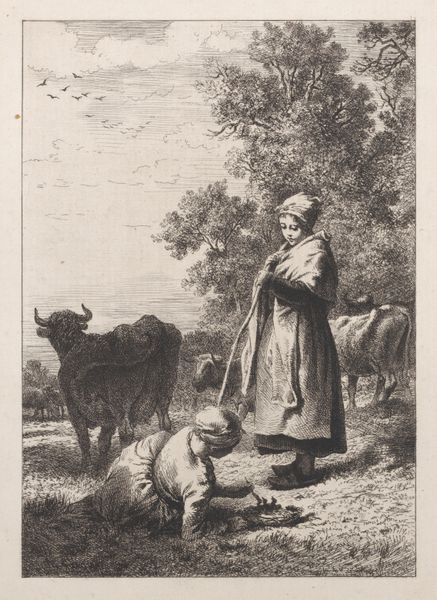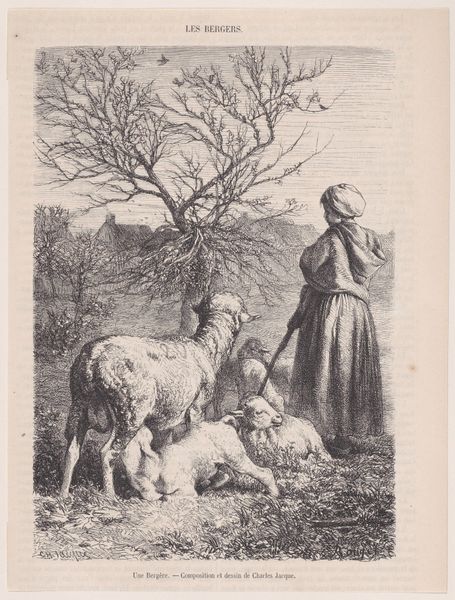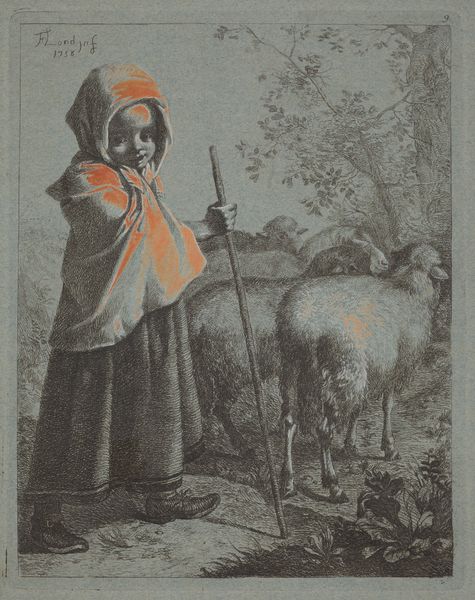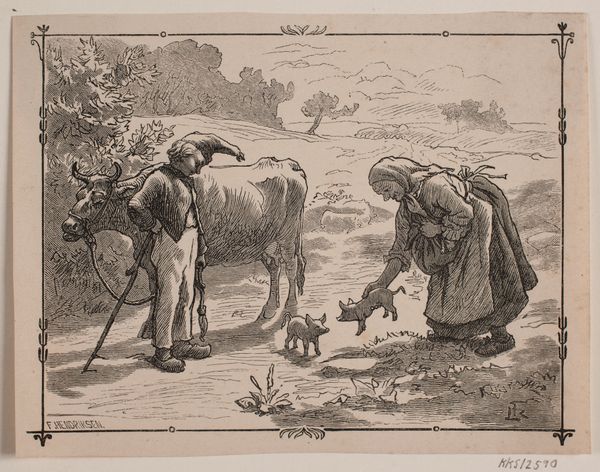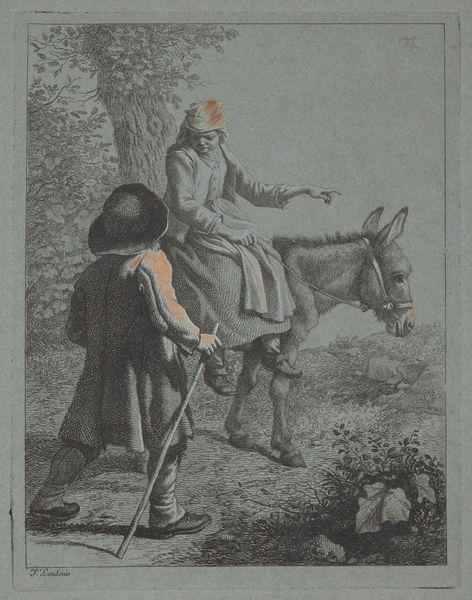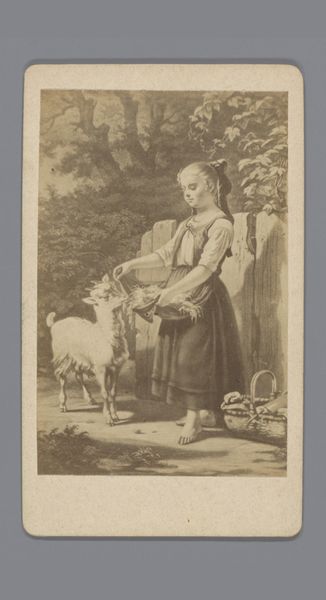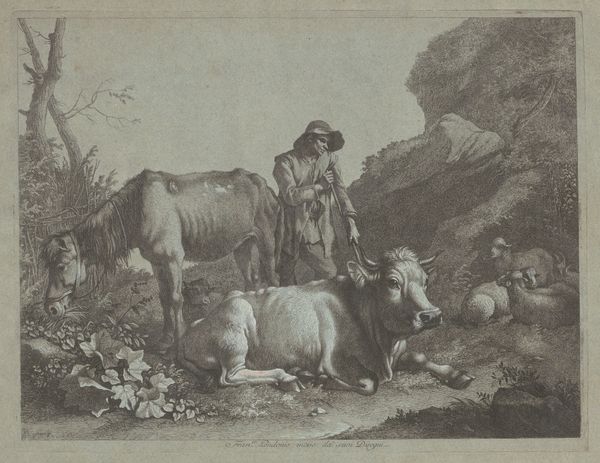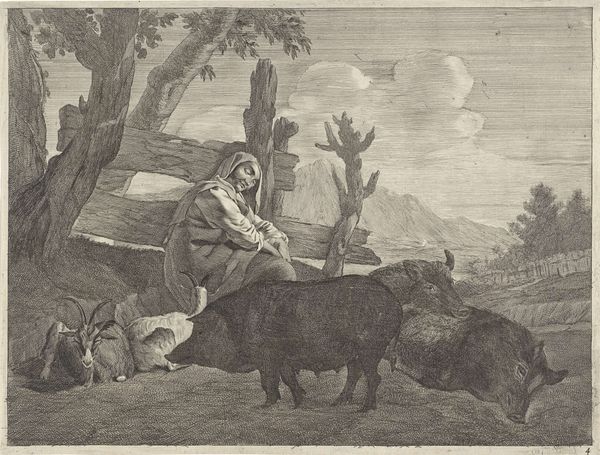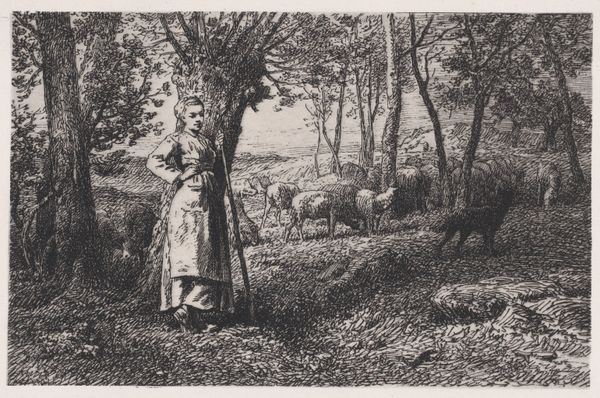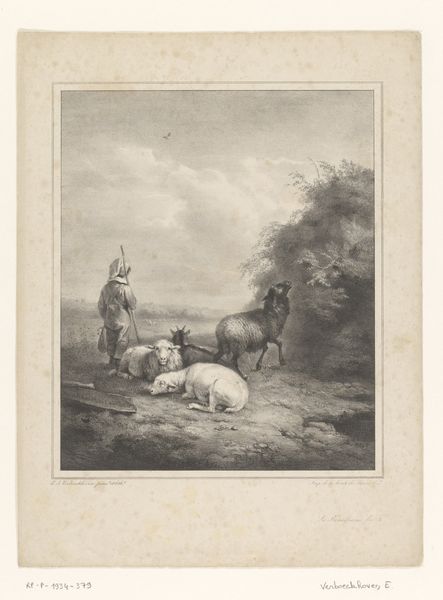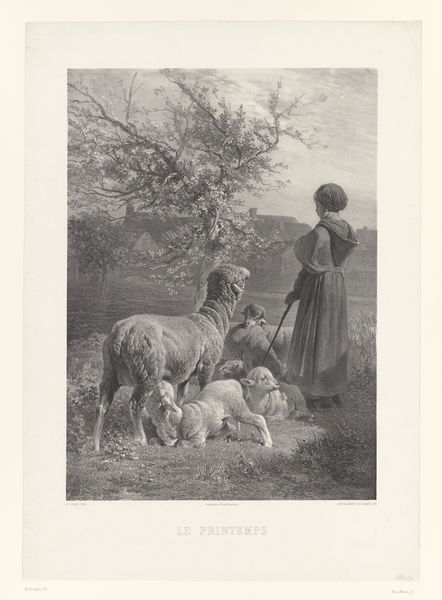
Cows and Cowherds, from "Le Magasin Pittoresque" 1848 - 1864
0:00
0:00
Dimensions: Sheet (Trimmed): 9 5/8 × 7 1/16 in. (24.4 × 17.9 cm) Image: 8 7/16 × 6 1/16 in. (21.5 × 15.4 cm)
Copyright: Public Domain
Curator: Immediately I see pastoral serenity in this scene, a deep connection between humans, animals, and the land. Editor: You’re picking up on something fundamental about this print—it’s called "Cows and Cowherds, from 'Le Magasin Pittoresque'," by Charles Jacque. We believe it was created sometime between 1848 and 1864. It’s a drawing, reproduced as an etching or engraving. Look closely; you will see much detail of a bucolic scene, indeed. Curator: The sheer scale feels almost… overwhelming. Considering its historical context, it's impossible not to consider the deeply entrenched class dynamics embedded in rural life. I wonder about the romanticization of this labor, how it obscures the harsh realities faced by those working the land. What’s presented as simple life feels ideological charged. Editor: The visual symbols here carry strong emotional weight. Notice how Jacque emphasizes the quiet, contemplative posture of the cowherds, dwarfed, literally, by the figures of the cows in the foreground and by the looming forest in the background. Even the birds overhead reinforce the feeling of rural abundance. What feelings about rural France might be at play here? Curator: Precisely! By placing humans within a seemingly endless field—they're rendered powerless but not erased. Gender is another thing here, you have the girls as cowherds instead of the typical men. It shifts the representation and possibly speaks of an intersectional shift in terms of gender within a societal system of inequality. It raises urgent questions about what such a landscape means, beyond bucolic charm. What histories are we not seeing? Editor: We're attuned to how images act as cultural touchstones, linking present viewers to past sensibilities. Curator: It is important to recognize how images normalize existing power structures but also to analyze how that power could potentially be reworked through critical approaches. Editor: Thank you for that perspective, it illuminates a facet I had not perceived! Curator: Gladly! This was also quite illuminating!
Comments
No comments
Be the first to comment and join the conversation on the ultimate creative platform.
